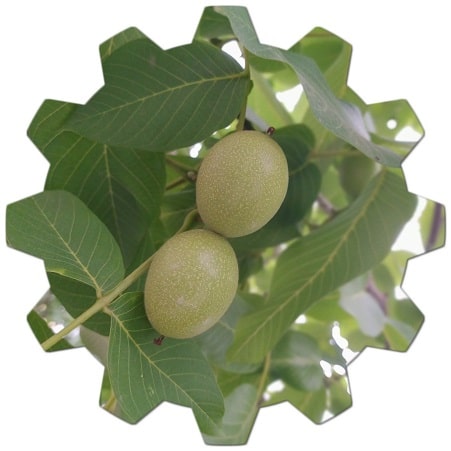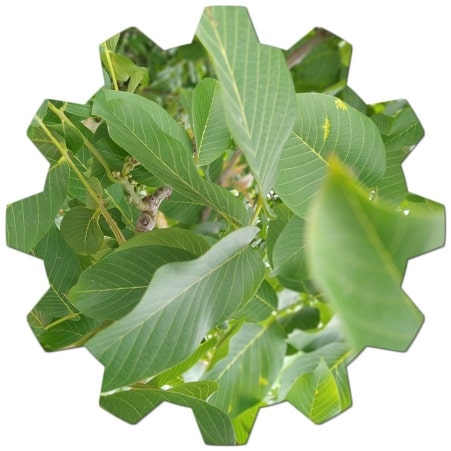Can you grow walnut trees in California?
Yes, walnut trees can be successfully grown in California. In fact, California is one of the leading walnut-producing regions in the United States. The state’s favorable climate and suitable growing conditions make it an ideal location for walnut cultivation.
California primarily cultivates the English Walnut or Persian Walnut (Juglans regia), which is well-adapted to the state’s climate. The Central Valley region of California, including areas such as Fresno, Sacramento, and Stockton, is particularly known for its extensive walnut orchards.
The Mediterranean climate of California, with its mild winters and warm summers, provides the necessary conditions for walnut trees to thrive. The trees require a period of winter chill for proper dormancy and fruit set, and the state’s climate satisfies this requirement.

Walnut production in California is not limited to commercial orchards. Many homeowners and small-scale growers also successfully cultivate walnut trees in their gardens or backyard orchards, provided they have the necessary space and appropriate growing conditions.
It’s important to consider the specific species and variety of walnut tree when selecting one for California, as different cultivars may have varying requirements and adaptability to specific regions within the state. Consulting with local agricultural extension services or nurseries can provide more precise guidance on selecting and growing walnut trees in California.
Where do walnuts grow in California?
Walnuts are grown in several regions of California, with the majority of commercial walnut production concentrated in the Central Valley. Here are some key walnut-growing regions in California:
- Sacramento Valley: The northern part of the Central Valley, including areas around Chico, Yuba City, and Red Bluff, is known for walnut cultivation. The Sacramento Valley provides suitable conditions for walnut trees with its warm summers and mild winters.
- San Joaquin Valley: This is the largest and most significant walnut-growing region in California. It stretches through the central part of the state, encompassing cities such as Stockton, Modesto, Fresno, and Bakersfield. The San Joaquin Valley has a Mediterranean climate that favors walnut production.
- Central Coast: The coastal areas of California, including parts of Monterey County, San Benito County, and Santa Barbara County, have a more moderate climate that is suitable for growing English walnuts. Some walnut orchards can be found in these coastal regions.
- Southern California: Although less extensive than the Central Valley, there are walnut orchards in certain parts of Southern California, particularly in Ventura County and Riverside County.
It’s important to note that within these regions, the specific microclimates, soil types, and elevation can affect walnut tree growth and production. Different walnut varieties may also be better suited to specific regions based on their adaptability to local conditions.

California’s diverse walnut-growing regions contribute to the state’s status as a major producer of walnuts in the United States, supplying a significant portion of the nation’s walnut crop. Do walnuts grow well in California? >>
Walnut tree pruning in California
Pruning walnut trees in California follows general pruning principles but may also take into account the specific climate and growing conditions of the region. Here are some guidelines for walnut tree pruning in California:
- Timing: Prune walnut trees during their dormant period in late winter or early spring, before new growth begins. Pruning during this time minimizes stress on the tree and reduces the risk of disease transmission.
- Thinning: Remove any dead, diseased, or damaged branches, as well as any crowded or crossing branches. Thinning the canopy improves airflow and sunlight penetration, which is important for overall tree health.
- Shaping the tree: Walnut trees typically have a central leader with lateral branches growing in a somewhat open, vase-like shape. Prune to maintain this structure, removing any competing leaders or branches growing too vertically. Maintain a balanced canopy by pruning back branches that are growing too vigorously.
- Suckers and water sprouts: Regularly remove suckers (shoots emerging from the rootstock) and water sprouts (vigorous vertical shoots) to redirect the tree’s energy to desired growth and fruit production. These shoots often emerge from the base of the tree or from previous pruning cuts.
- Pruning cuts: Make clean, precise cuts just outside the branch collar (swollen area where the branch attaches to the trunk or another branch). Avoid leaving stubs or making flush cuts, as these can impede healing and increase the risk of disease.
- Sanitation: Remove and dispose of any pruned material, including branches affected by disease or pests, to prevent the spread of pathogens.
It’s important to note that these are general guidelines, and pruning practices may vary based on the specific variety of walnut, the age and size of the tree, and the goals of the grower. Consulting with local agricultural extension services, certified arborists, or experienced walnut growers in California can provide more specific recommendations tailored to your particular situation.
Walnut tree care in California
Caring for walnut trees in California involves several key aspects to ensure their health and productivity. Here are some important considerations for walnut tree care in California:
- Watering: Provide regular and adequate watering to walnut trees, especially during dry periods. The frequency and amount of water will depend on factors such as soil type, weather conditions, and the tree’s age and size. Deep, infrequent watering encourages deep root growth and helps the tree withstand periods of drought. However, be cautious not to overwater, as walnut trees are susceptible to root rot.
- Fertilization: Conduct soil tests to determine the nutrient requirements of your walnut trees. California soils can vary in fertility, so it’s important to ensure the trees have access to essential nutrients. Apply balanced fertilizers or organic amendments according to the soil test results and the tree’s needs. Fertilization is typically done in early spring before the growing season begins.
- Mulching: Apply organic mulch around the base of the tree, keeping it a few inches away from the trunk. Mulch helps retain soil moisture, suppresses weed growth, and moderates soil temperature. Use materials like wood chips, straw, or leaves to create a mulch layer that is several inches thick.
- Pest and disease management: Monitor walnut trees for common pests and diseases in California, such as walnut husk fly, codling moth, aphids, walnut blight, and root rot. Implement integrated pest management strategies, which can include the use of beneficial insects, traps, and appropriate insecticides or fungicides when necessary. Regularly inspect the trees for signs of damage or infection and take prompt action if needed.
- Pruning: Prune walnut trees during the dormant season (late winter or early spring) to remove dead, diseased, or damaged branches. Thinning out crowded areas of the canopy promotes better airflow and sunlight penetration. Prune to maintain the desired tree structure and remove any suckers or water sprouts.
- Harvesting: Pay attention to the timing of walnut harvest, as it can vary depending on the walnut variety. Harvest when the hulls have turned brown and split, revealing the mature nuts inside. Proper harvesting techniques and timely processing are crucial to preserving the quality of the harvested walnuts.
- Monitoring and maintenance: Regularly observe your walnut trees for signs of stress, nutrient deficiencies, or other issues. Inspect the soil for moisture levels, check for signs of pests or diseases, and address any problems promptly. Conduct regular maintenance tasks like weed control, checking irrigation systems, and ensuring proper tree support if needed.
Remember that walnut tree care can vary depending on the specific variety, local conditions, and individual tree requirements. Consulting with local agricultural extension services, walnut industry experts, or experienced walnut growers in California can provide valuable insights and tailored recommendations based on your specific location and circumstances. How many walnut trees are in California? >>





